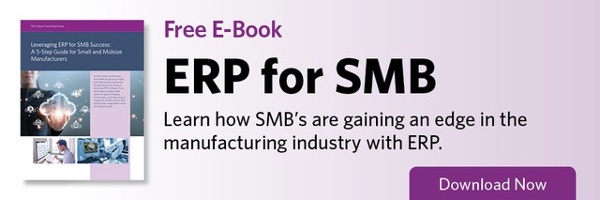In this special blog series, we’re discussing common challenges we’ve seen in our 25 years deploying ERP systems for manufacturers big and small.
One of the most nerve-wracking moments in planning your ERP implementation is defining your go-live date. It is an important deadline and the mark from which all other milestones will be planned. But how do you go about circling the right date on a calendar?
Here are some tips for plotting a realistic timeline for your ERP implementation.
Learn from your Peers
As you embark on your ERP journey, you might have a senior leader at the company telling you it would be really nice to have the project wrapped up by the end of the year or prior to your next summer vacation. Or maybe you’ve heard an anecdote from a software sales rep about how a client was able to get up and running “quickly.”
When it comes to an organizational change this substantial, there is no place for arbitrary deadlines. Generally, an ERP implementation in mid-size company can take up to a year, and when done successfully, include carefully calculated milestones leading up to its go-live date. To formulate a realistic rollout plan, it is imperative that you choose an implementation partner who has worked with other organizations of your size and industry. Experience matters. With this raw data from previous implementations, your partner will be well-positioned to use predictive analysis to formulate a plan that is both feasible and comfortable for your organization.
Don't Be So Technical
If you’re looking through your ERP project plan and seeing that most tasks are assigned to your implementation partner or IT department, then you might be in some trouble.
Many vendors will try to sell you on the fact that ERP systems are a cure-all for suboptimal business processes. But ERP has never been and will never be a “set it and forget it” kind of software.
Before getting started, consult with all your ERP stakeholders to ensure your plan accounts for activities like business process redesign, multi-format training sessions, organizational change management, and other mandatory non-technical milestones that must be met prior to launch. This will allow your non-technical implementation tasks to keep pace with software progress, minimizing the need for last-minute customizations and keeping you on track for a realistic and timely deployment.
Plan for Bumps Before You Hit Them
As we discussed earlier in this blog series, ERP implementation is an organizational change that requires planning and management. While software might be able to plot out the technical steps leading up to go-live, automatic milestone mapping, pre-configurations and other software efficiencies can’t make up for the unique organizational setbacks that might occur. It’s important that you take a deeper dive during the timeline review process. Consider the distinct facets of your organization that may contribute to delays or difficulties. Are there are other company-wide initiatives that may distract away from your focus during this time? Maybe certain departments will need to drastically rethink their SOPs in light of the rollout, or you foresee possible supply chain complications that will need to be worked out. Whatever the case may be, these potential disruptions should be factored in to your final timeline so your worst-case scenario is already accounted for.
Let’s face it: a lot can happen over the course of a year-plus, and much of it will be out of your control. By leveraging your partner’s past experience and thinking honestly and critically about any potential setbacks in your ERP implementation, you’ll be in a much better position to make a promise that you can confidently keep months down the line.

